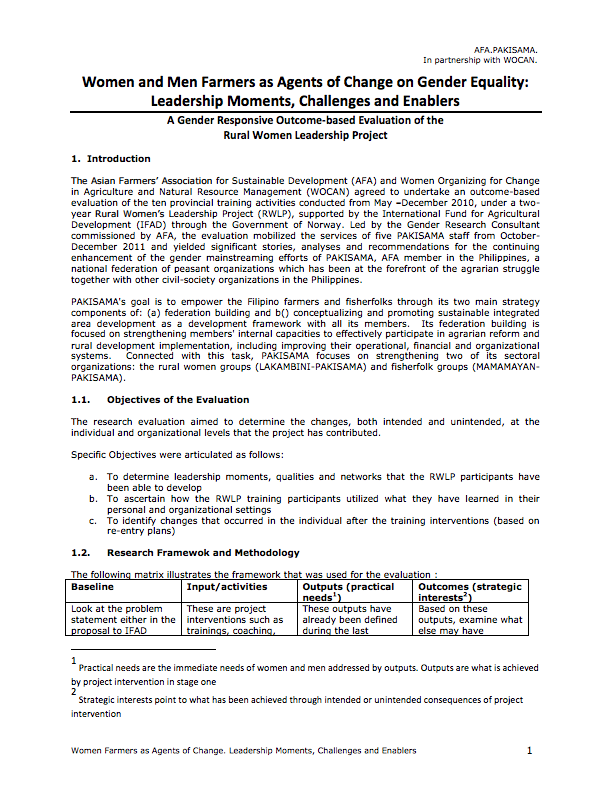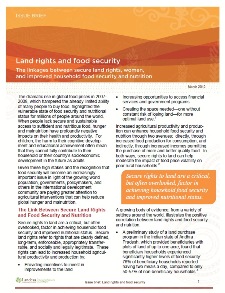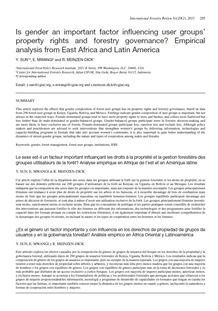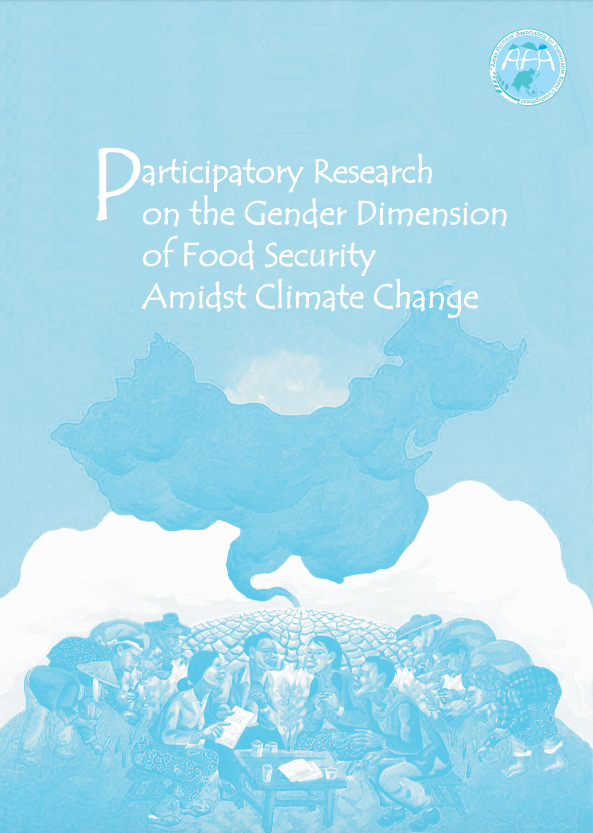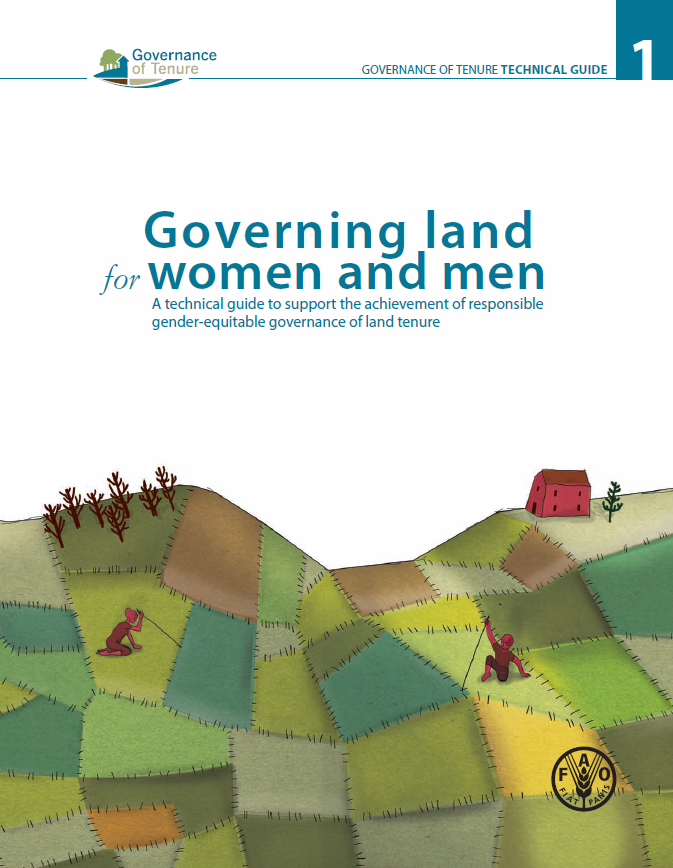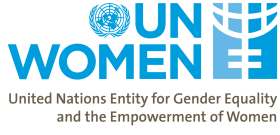
(a) Proportion of total agricultural population with ownership or secure rights over agricultural land, by sex; (b) share of women among owners or rights-bearers of agricultural land, by type of tenure
Last updated on 1 February 2022
This indicator is currently classified as Tier II. The Food and Agriculture Organization of the United Nations (FAO) is the main Custodian agency. UN Women, the United Nations Statistics Division, the World Bank, United Nations Environment Programme (UNEP), and UN-Habitat are partner agencies.
Unit of measure: Proportion of total agricultural population with ownership or secure tenure rights over agricultural land, by sex; share of women among owners or rights-bearers of agricultural land, by type of tenure
Why is this indicator important?
The empowerment of women and girls and the realization of gender equality are pivotal in achieving sustainable development, peace, food security, and other benefits for communities and societies at large. For rural women in particular, rights and access to land are needed to secure food and income for families, and to make women's voices count in community decision-making.
SDG indicator 5.a.1 monitors ownership and rights over agricultural land and is useful in profiling gender differences in agricultural land ownership and control in the sense of being able to sell or bequeath land, for example. As such, it allows to measure gender inequalities in agricultural land ownership and control. An increase in the percentage of women who own and/or control agricultural land indicates that progress is made towards achieving equal rights to land among men and women.
How is the indicator measured and monitored?
According to the metadata document, data collection draws on agricultural surveys and censuses or national household surveys. The indicator uses the agricultural population as a denominator with emphasis on the adult population living in households that have practiced agriculture over the last 12 months. This allows to capture agricultural households even if interviewed off-season. As of late 2021, ten countries have reported their official data on indicator 5.a.1.
In collaboration with UN-Habitat and the World Bank, FAO developed a joint methodology for the indicators 1.4.2 and 5.a.1 to facilitate efficient and cross-country comparable data collection. More information and additional data relating to indicator 5.a.1 such as the distribution of agricultural holders (by sex), distribution of agricultural land area owned (by sex), distribution of agricultural land value owned (by sex) is disseminated through FAO’s Gender and Land Rights Database. Disaggregated data by tenure type shall receive more attention in future reporting.
By Anne Hennings, peer-reviewed by Everlyne Nairesiae, GLII Coordinator at the Global Land Indicators Initiative (GLII) at GLTN, Un-Habitat and Clinton Omusula, Land Data and Knowledge Management Specialist at the Global Land Indicators Initiative (GLII) at GLTN, UN-Habitat and by FAO.
Official indicator data
The two sub-indicators measure how prevalent ownership or secure rights over agricultural land are in the reference population as well as the share of women among owners or rights-bearers. * Select "year" below to see the most recent data for more countries. ** To refresh the map with other official data, use the "Select an indicator" field. Type in the other indicators titles, as given in the table below.
Other related indicators on Land Portal
In addition to the official indicator data, the following indicators provide information concerning women’s tenure security, land rights, and access to land.
| Indicator | Min-Max Number of years |
Countries / Obs | Min / Max Value |
|---|---|---|---|
| Distribution of agricultural land area owned by sex (female - share%) | |||
| Formal recognition of women's right | |||
| Women's property rights are recorded (i) urban (ii) rural | |||
| 2016 - Women's property rights to land are equal to men's (i) in law and (ii) in practice |
Women Farmers’ Land Rights: Closing the Global Gender Gap in the Midst of Climate Change
(IPS) – In Meghalaya, India’s northeastern biodiversity hotspot, all three major tribes are matrilineal. Children take the mother’s family name, while daughters inherit the family lands.
Because women own land and have always decided what is grown on it and what is conserved, the state not only has a strong climate-resistant food system but also some of the rarest edible and medicinal plants, researchers said.
When Women Have Land Rights, the Tide Begins to Turn
NEW DELHI, Jun 12 2017 (IPS) - In Meghalaya, India’s northeastern biodiversity hotspot, all three major tribes are matrilineal. Children take the mother’s family name, while daughters inherit the family lands.
Because women own land and have always decided what is grown on it and what is conserved, the state not only has a strong climate-resistant food system but also some of the rarest edible and medicinal plants, researchers said.
Granting Women Their Land Rights Benefits Everyone
By: Melany Grout
Date: 28 June 2016
Source: News Deeply
More than 400 million women around the globe are farmers, but many have no rights to the land they till. Securing those rights is crucial if the world wants to reach its development goals, writes land tenure specialist Melany Grout.
Paginering
- Vorige pagina ‹ previous
- Pagina 7
Women and Men Farmers as Agents of Change on Gender Equality: Leadership Moments, Challenges and Enablers
The Asian Farmers’ Association for Sustainable Development (AFA) and Women Organizing for Change in Agriculture and Natural Resource Management (WOCAN) agreed to undertake an outcome-based evaluation of the ten provincial training activities conducted from May –December 2010, under a twoyear Rural Women’s Leadership Project (RWLP), supported by the International Fund for Agricultural Developmen
Women’s land rights and nutrition
I invite you to read this blog post by Amanda Richardson, Landesa. The post also mentions the issue brief, recently published by Landesa, collating some evidence on the relation between secure land rights, women, and improved household food security and nutrition.
Is gender an important factor influencing user groups’ property rights and forestry governance?
[From CIFOR] This article explores the effects that gender composition of forest user groups has on property rights and forestry governance, based on data from 290 forest user groups in Kenya, Uganda, Bolivia, and Mexico.
Participatory Research on the Gender Dimension of Food Security amidst Climate Change
Addressing the problem of hunger in a world where food production systems, particularly in developing countries, are being eroded and undermined by climate change is one of the most important challenges of our time.
Governing Land for Women and Men- A Technical Guide to Support The Achievement of Responsible Gender-Equitable Governance of Land tenure
[via FAO] This technical guide aims to assist implementation of the Voluntary Guidelines by providing guidance that supports the Guidelines' principle of gender equality in tenure governance. The guide focuses on equity and on how land tenure can be governed in ways that address the different needs and priorities of women and men.
Paginering
![]()

Undertake reforms to give women equal rights to economic resources, as well as access to ownership and control over land and other forms of property, financial services, inheritance and natural resources, in accordance with national laws
Indicator details
The indicator is conceptually clear, has an internationally established methodology and standards are available, but data is not regularly produced by countries.
Key dates:





